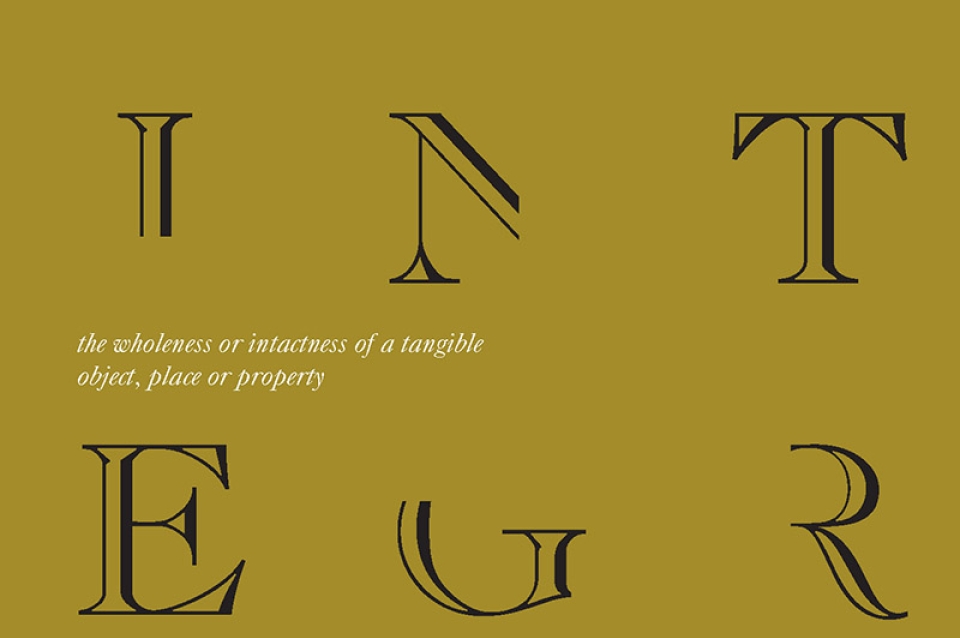July 11, 2022
Stuart Weitzman School of Design
102 Meyerson Hall
210 South 34th Street
Philadelphia, PA 19104
Get the latest Weitzman news in your Inbox
Media Contact
Michael Grant
mrgrant@design.upenn.edu
215.898.2539
Change Over Time is a semiannual, peer-reviewed journal of the history, theory, and praxis of conservation and the built environment. Published by the University of Pennsylvania Press, the journal is edited by Professor Frank Matero and Lecturer Kecia Fong both of the Graduate Program in Historic Preservation. The latest issue 10.2 Integrity provides a valuable contribution to critiques of “integrity,” one of the central constructs of the conservation field. The authors in this issue raise questions about how we might differently perceive and engage with this core concept from legal, methodological, interpretive, ethical, and design perspectives. Each article examines how definitions of integrity impact access to our shared heritage from the physical and socio-political framings of integrity at Hono’uli’uli National Historic Site in Hawai’i to the legal contours of integrity that are central to protection and designation processes. In this excerpt from “Integrity as a Legal Concept,” Professor Sarah C. Bronin of the College of Architecture, Art, & Planning at Cornell University, explores the definitions and interpretations of integrity that are integral to binding judgments in the public and private realms. The full text is available in COT issue 10.2 Integrity and can be accessed through Project Muse (subscription required).
Integrity—the ability of a resource to communicate its historic significance—is a physical concern for heritage conservation practitioners.(1) But it is also a legal concept, integral to binding judgments that determine whether and how certain resources are protected. Focusing on US law, this essay articulates the contours of integrity both before and after a resource is designated historic.
Most existing scholarship on integrity focuses on the designation process, which is the formal process by which a resource is evaluated for listing on a register of historic places. A person seeking to list a resource on such a register must demonstrate that the resource satisfies legal criteria for listing. The integrity determination is a threshold issue—fundamental to historic preservation laws, which apply almost exclusively to resources actually listed on historic registers.
Scholars have criticized the integrity requirement in designation determinations because they believe it bars certain types of resources from receiving legal protection. For example, resources associated with low-income people, indigenous people, or people of color often change over time, such that they do not maintain the physicality of the time period of significance. Accordingly, they may lack integrity under strict interpretations of designation criteria. Yet these places have meaning, enshrined in storytelling and memory, which can be documented but do not "count" as proof of significance in the legal sense. These concerns about inclusion are critically important. But focusing on the designation process alone may obscure the fact that the concept of integrity is embedded in other areas of law.
After a resource is designated historic, the law continues to protect its integrity in several ways. This essay focuses on three: by imposing obligations on public actors, by imposing obligations on private actors, and by conferring benefits on private actors. In these situations, integrity is essential to the legal obligation itself, and it is treated as formally as it is during the designation process. For example, many federal and state statutes require public agencies to consider or protect historic integrity in making decisions or executing projects, and many local laws require private parties to do the same. Similarly, integrity is a consideration in whether private parties may receive benefits, such as tax credit for rehabilitations and tax deductions for qualified easement donations, for their preservation activities.
In each of these post-designation legal arenas, a decisionmaker must determine whether integrity is affected. But before she can do that, she must identify the aspects of integrity held by the resource. Applications for designation can provide a baseline understanding, but integrity may change from the time of designation to the time a post-designation legal issue arises. Moreover, some laws protect non-designated historic resources, meaning that decision makers must assess integrity without the benefit of baseline documentation assembled during the designation process. Integrity is thus a moving target, with shifting concepts of integrity arising as different legal regimes require or as different decision makers allow.
In light of these observations, preservationists must reckon with two dimensions of the integrity problem. The first arises during the designation process, which requires assessments of integrity that have been rightly criticized for hindering telling the full American story. The second arises after designation, when decisionmakers must update concepts of integrity and assess them against other social values potentially advanced by the public or private action triggering the assessment. As discussed below, preservation laws involving public actors have attempted to balance these competing factors, although with some risk to historic resources. Generally, interpretations of the term "integrity" tilt against change and toward strict material fidelity. Overly rigid interpretations can both block designation of resources and hinder necessary or socially beneficial changes to them.
This essay first describes the threshold role integrity plays in legal standards for designation. It then analyzes current scholarship on integrity and how it focuses heavily on designation, ignoring other laws. The essay then turns to how the law treats integrity when it comes to public obligations, general obligations, and private benefits. The essay concludes that integrity, as a legal concept, may be more complicated, and more difficult to dislodge, than current scholarship suggests. Throughout, the essay sketches out alternatives to material fidelity that acknowledge human experience, and it suggests ways both designation and post-designation laws can better accommodate other social benefits.
(1) National Park Service, How to Apply the National Register Criteria for Evaluation (Washington, DC: US Government Printing Office, 1995): 44.


 Expand Image
Expand Image



